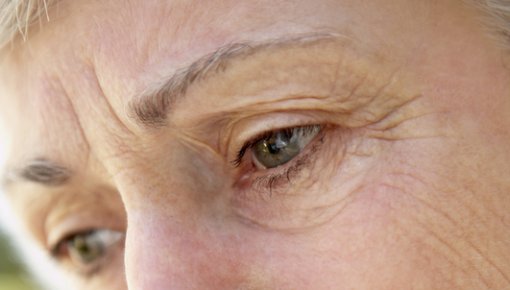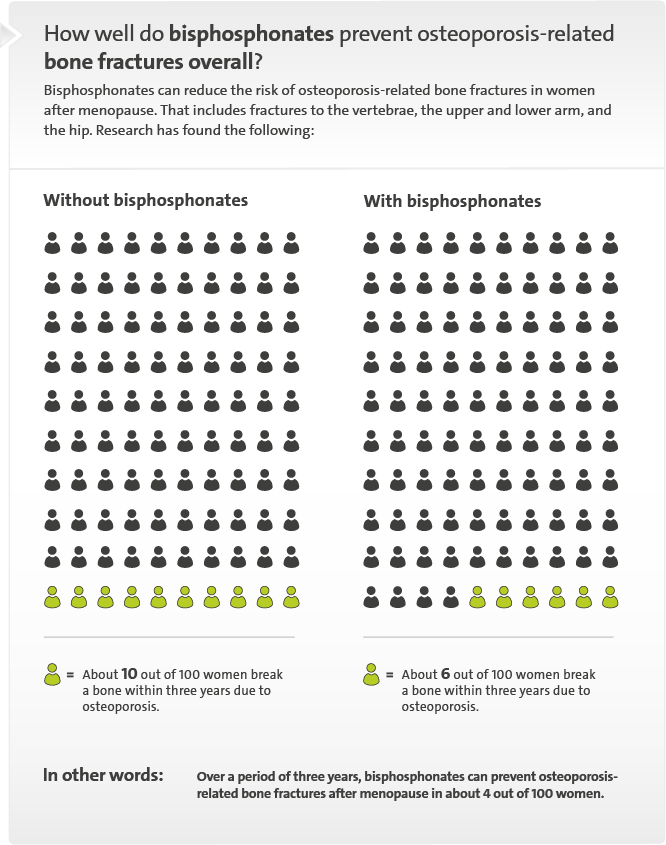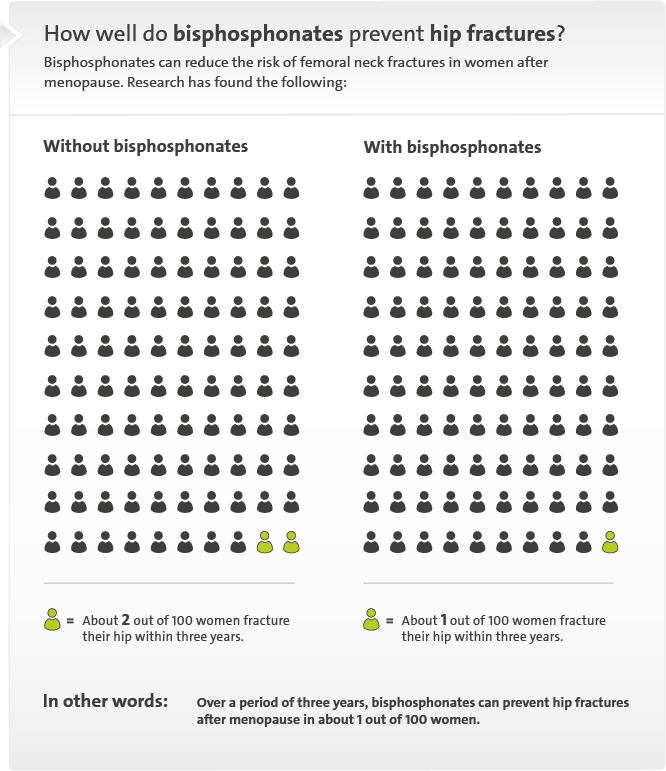Barrionuevo P, Kapoor E, Asi N et al. Efficacy of Pharmacological Therapies for the Prevention of Fractures in Postmenopausal Women: A Network Meta-Analysis. J Clin Endocrinol Metab 2019; 104(5): 1623-1630.
Crandall CJ, Newberry SJ, Diamant A et al. Comparative effectiveness of pharmacologic treatments to prevent fractures: an updated systematic review. Ann Intern Med 2014; 161(10): 711-723.
Dachverband der Deutschsprachigen Wissenschaftlichen Osteologischen Gesellschaften (DGO). Prophylaxe, Diagnostik und Therapie der Osteoporose bei postmenopausalen Frauen und bei Männern. AWMF-Registernr.: 183-001. 2017.
Deardorff WJ, Cenzer I, Nguyen B et al. Time to Benefit of Bisphosphonate Therapy for the Prevention of Fractures Among Postmenopausal Women With Osteoporosis: A Meta-analysis of Randomized Clinical Trials. JAMA Intern Med 2022; 182(1): 33-41.
Maraka S, Kennel KA. Bisphosphonates for the prevention and treatment of osteoporosis. BMJ 2015; 351: h3783.
Moynihan R, Sims R, Hersch J et al. Communicating about overdiagnosis: Learning from community focus groups on osteoporosis. PLoS One 2017; 12(2): e0170142.
Qaseem A, Forciea MA, McLean RM et al. Treatment of Low Bone Density or Osteoporosis to Prevent Fractures in Men and Women: A Clinical Practice Guideline Update From the American College of Physicians. Ann Intern Med 2017; 166(11): 818-839.
Viswanathan M, Reddy S, Berkman N et al. Screening to Prevent Osteoporotic Fractures: Updated Evidence Report and Systematic Review for the US Preventive Services Task Force. JAMA 2018; 319(24): 2532-2551.
IQWiG health information is written with the aim of helping people understand the advantages and disadvantages of the main treatment options and health care services.
Because IQWiG is a German institute, some of the information provided here is specific to the German health care system. The suitability of any of the described options in an individual case can be determined by talking to a doctor. informedhealth.org can provide support for talks with doctors and other medical professionals, but cannot replace them. We do not offer individual consultations.
Our information is based on the results of good-quality studies. It is written by a team of health care professionals, scientists and editors, and reviewed by external experts. You can find a detailed description of how our health information is produced and updated in our methods.



